
iRAP organized a workshop entitled: “Tackling the transition to highly automated vehicles – the assessment of road and vehicle investment priorities” which took place with great success on 8-10 November 2017 in Automotive Campus, Helmond, Netherlands. The iRAP innovation workshop brings together policy and technical leaders, along with investment experts and those with the capacity to implement change and eliminate high-risk roads. Global leaders who, together, will play a significant role in ensuring safer infrastructure and safer speeds do their part in delivering a safe road and transport system. ![]()
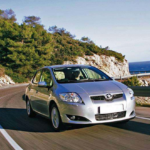
A Diploma Thesis titled “Investigation of the effect of tourism on road accidents” was presented by Vasileios Bellos in November 2017. The objective of this Diploma Thesis is to investigate the effect of tourism on road accidents. For this purpose, data on road accidents in Greece for the five-year period of 2011-2015 were collected. Negative binomial regression models were developed and it was observed that both the tourist season and tourism as travelling purpose led to an increase in road accidents, with the highest increase being observed in tourist regions. The increase of the relative rate ratio of road accident involvement for foreign tourists in tourist regions may indicate the increased risk of foreign tourists compared to Greek drivers. ![]()
![]()

The World Health Organization (WHO) in collaboration with other United Nations Agencies and Regional Commissions is developing the global performance targets on key risk factors and service delivery mechanisms to reduce road traffic fatalities and injuries, aligned to the UN Sustainable Development Goals for 2030. ![]() The second revision of the related WHO Discussion Paper was published in August 2017
The second revision of the related WHO Discussion Paper was published in August 2017 ![]() and in November 2017 a comprehensive set of 12 Global Road Safety Performance Targets was put forward aiming to guide global road safety policy and related activities up to 2030.
and in November 2017 a comprehensive set of 12 Global Road Safety Performance Targets was put forward aiming to guide global road safety policy and related activities up to 2030. ![]() The Member States have also invited WHO and other UN Agencies to continue the work by developing a set of related indicators.
The Member States have also invited WHO and other UN Agencies to continue the work by developing a set of related indicators.

A Diploma Thesis titled “Investigation of the impact of weather conditions to young drivers’ behavior and safety in cities with the use of driving simulator” was presented by Maria Chaireti in November 2017. In order to achieve this objective, an experimental process on a driving simulator was carried out and regression models were developed to investigate the impact of weather conditions on the mean speed, the lateral position of the vehicle from the right borderline and the accident probability. The models’ application indicated that driving in the rain contributes to a small reduction in speed, but also to a significant increase in the probability of an accident. When driving in fog, drivers seem to be more cautious, as the lateral position of the vehicle from the right borderlines reduced and the probability of an accident decreased. ![]()
![]()
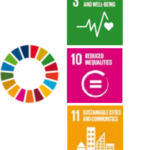
World Health Organisation (WHO) Regional Office for Europe released Facts Sheets with key facts and figures, ongoing commitments, guidance on action, and indicators to monitor progress of the Sustainable Development Goals health targets, regarding Road Safety ![]() :
:
- SDG target 3.6: by 2020, halve the number of global deaths and injuries from road traffic accidents and
- SDG target 11.2: by 2030, provide access to safe, affordable, accessible and sustainable transport systems for all, improving road safety, notably by expanding public transport, with special attention to the needs of those in vulnerable situations, women, children, people with disabilities and older people.
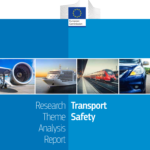
European Commission’s Directorate General for Mobility and Transport (DG-MOVE) released the sixth and final Research Theme Analysis Report, covering the Transport Safety research theme, produced under the Transport Research & Innovation Portal (TRIP) continuation project, with the active contribution of NTUA. This Research Theme Analysis Report provides a robust and thorough assessment of the results from several European road safety projects and highlights the perspectives from scientific and policy points of view. ![]()
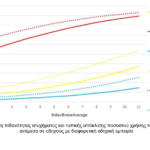
A Diploma Thesis titled “Analysis of the impact of weather conditions on the behaviour and safety of young drivers on rural roads with the use of driving simulator” was presented by Anna-Maria Sourelli in November 2017. This Thesis focused on the analysis of the impact of weather conditions on the behaviour and safety of young drivers on rural roads. In order to achieve this objective, an experimental process using a driving simulator was carried out, in which 40 participants aged 20-28 years drove in different driving scenarios. Lognormal regression methods were used in order to develop the mathematical model of the average driving speed and binary logistic methods were used for the model of the accident probability. The models’ application revealed that rain increases significantly the accident probability, despite the observed speed reduction. ![]()
![]()

The International Road Federation’s 18th World Road Meeting (WRM), took place with great success in Delhi, India on November 14th – 17th, 2017. The theme of the 18th WRM was “Safe Roads and Smart Mobility : The Engines of Economic Growth.” WRM 2017 brought together representatives of business, industry, governments, public sector organisations, mult-ilateral institutions, leaders and transport experts from the automotive, financial, road and transport infrastructure, and construction sectors; professionals, academics, consultants, infrastructure operators, contractors and manufacturers from across the world. ![]()
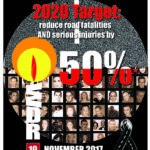
The World Day of Remembrance for Road Traffic Victims is observed on the third Sunday of November each year (this year on 19 November 2017) by an increasing number of countries on every continent around the world. From 1995, the European Federation of Road Traffic Victims (FEVR) observed this day, as European Day of Remembrance, that was adopted by the United Nations in 2005, and is dedicated to remembering the many millions killed or injured in road crashes and their families and communities, as well as to pay tribute to the dedicated emergency crews, police and medical professionals who daily deal with the traumatic aftermath of road death and injury. ![]()
![]()
- the World Health Organization (WHO) supported this World Day of remembrance
 and produced Save LIVES: a road safety technical package, last May
and produced Save LIVES: a road safety technical package, last May 
- Road Safety Institute “Panos Mylonas” organised several prevention and educational road safety actions

- EFTHITA Rhodes is organizing several activities starting on 13 November until the World Day of Remembrance for Road Traffic Victims 19 November 2017

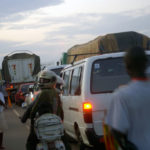
A recent United Nations‘ Press Release highlighted the fact that 650 people are killed each day in road accidents throughout Africa. “There is projected increase in urbanization, motorization, infrastructure development projects and vehicle ownership in the region over the coming decades. Road traffic fatalities and injuries will continue to take a rising toll on countries if no significant changes are made” warned the Special Envoy for Road Safety, Jean Todt, addressing the 2017 Africa Road Safety Conference in Cape Town, South Africa. To change this trend, Mr. Todt urged participating governments to implement the Global Plan for the Decade of Action and the African Road Safety Action Plan, which focuses on safer roads, vehicles and road users. It also details improved post-crash care and stronger road safety governance, including the enforcement of strong legislation. He also called for implementing basic laws not obeyed in some countries, such as using seat belts and helmets, child safety seats, and prohibiting drunk drivers. ![]()

The World Academy of Science, Engineering and Technology (WASET) organised the ICTTP 2018: 20th International Conference on Traffic and Transportation Psychology on 22-23 October 2018, in Bali, Indonesia. The Conference aimed to bring together leading academic scientists, researchers and research scholars to exchange and share their experiences and research results on all aspects of Traffic and Transportation Psychology. It also provided a premier interdisciplinary platform for researchers, practitioners and educators to present and discuss the most recent innovations, trends, and concerns as well as practical challenges encountered and solutions adopted in the fields of Traffic and Transportation Psychology. ICTTP 2018 has teamed up with the Special Journal Issue on Traffic and Transportation Psychology. ![]()
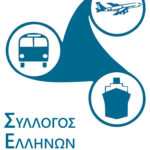
The Hellenic Institute of Transportation Engineers (HITE), has released its position towards the improvement of road safety in Greece with an elaborate problem analysis and a comprehensive set of prioritised measures. In addition, HITE has released its position on the changes of the Road Traffic Code proposed by the Government. Even though some proposed provisions are considered very useful (cycle and HGV traffic rules, fines rationalisation, etc.) the intention to decrease speeding fines and to increase motorways speed limits are blatant failures highlighted by the HITE. ![]()
![]()
![]()
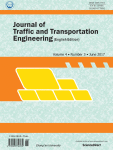
A paper titled “Modelling the effect of traffic regimes on safety of urban arterials: the case study of Athens” authored by Athanasios Theofilatos, George Yannis, John Golias and Eleni Vlahogianni is now published in Journal of Traffic and Transportation Engineering. To achieve the aims of the study, traffic and accident data during the period 2006–2011 from two major arterials in Athens were collected and processed. Firstly, a finite mixture cluster analysis was implemented to classify traffic into clusters. Afterwards, discriminant analysis was carried out in order to correctly assign new cases to the existing regimes by using a training and a testing set. Lastly, Bayesian logistic regression models were developed to investigate the impact of traffic regimes on accident likelihood and severity. The findings of this study suggest that urban traffic can be divided into different regimes by using average traffic occupancy and its standard deviation, measured by nearby upstream and downstream loop detectors. The results revealed potential specific hazardous traffic conditions. In general, high occupancy values increase accident likelihood, but tend to lead slight accidents, while PTWs are more likely to be involved in an accident, when traffic occupancy is high. Transitions from high to low occupancy also increase accident likelihood. ![]()

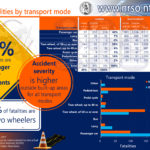
According to the ELSTAT final road accidents data for 2015 in Greece, 40% of road fatalities are passenger car occupants, whereas almost 30% of road fatalities are power two wheelers (the highest percentage in the European Union). Most car occupant fatalities occur outside built-up areas while most motorcycle and pedestrian fatalities occur inside built-up areas. Accident severity is five times higher outside built-up areas for all transport modes. ![]()
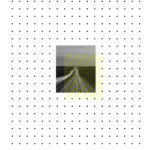
The European Union Road Federation (ERF) has released the Road Statistics Yearbook 2017” with the active contribution of NTUA. As for many years, this publication provides the road community with important updated information on road transport sector and road infrastructure in Europe and beyond as an essential key element of the global mobility with one section focusing on road safety. ![]()

The Global Road Safety Partnership (GRSP) organised the 5th Africa Road Safety Event, which was held with great success in Cape Town, South Africa on 23-24 October 2017. To meet the fast-approaching UN SDG target to halve deaths by 2020 there is need for sharing successes and results across the region. GRSP brought together Governments, Financial Institutions, industry and civil society partners who are making an impact. The Africa Road Safety 2017 event provided practical knowledge on: Global success stories from GRSP, WHO Save LIVES package, the latest on GRSP Road Safety Management initiatives, and Coordinating action on Safer Road Users. ![]()

The International Transport Forum (ITF) released the updated version of the Transport Database including the Road Injury Accidents Database with the latest data (2016). The database includes data on road injury accidents and road casualties in 53 countries, covering years from 2000 to 2016. The interactive design of the database gives the opportunity to export data, draw charts, and make dynamic queries. ![]()
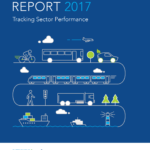
Sustainable Mobility for All (SuM4All) released the Global Mobility Report: the first-ever study to assess the global performance of the transport sector and the progress made toward four main objectives: universal access, efficiency, road safety, and green mobility. The publication covers all modes of transport, including road, air, waterborne, and rail transport. According to the report, the world is not on track to achieving sustainable mobility. Apart from being inaccessible to many of the world’s most vulnerable, the transport sector today is plagued by high fossil fuel use, rising greenhouse gas emissions, air and noise pollution, an alarming number of road fatalities, and a reluctance to embrace digitalization. ![]()
![]()
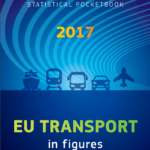
The Directorate General for Mobility and Transport (DG Move) of the European Commission released the Statistical Pocketbook 2017 ‘EU Transport in figures‘. In this Statistical Pocketbook, key road safety Tables are contained, together with several other Tables on transport statistics, providing a complete picture of current trends in transport in Europe. Data on road fatalities for the EU member states and associate countries allow for time series comparisons and country rankings. ![]()

The new online manual on road asset management announced by the World Road Association (PIARC) aims to help countries, whatever their stage of development, maintain their infrastructures and implement strategies to manage their road assets. This tool is intended for national and international decision-makers in fields concerning road safety, road network and ITS operation, and tunnels. Road infrastructures represent a key public asset in most countries, and traditional methods of managing the asset must progress to meet the requirements and constraints of the 21st century. ![]()

2017 NETS’ Strength in numbers Annual Conference was held in Charlottesville, Virginia, on October 14-15. The conference convenes each year to review the results of NETS’ annual Strength in numbers Fleet Safety Benchmark Report, as well as to hear about featured road safety case studies, new research, emerging issues, and projects that are underway. This year the conference included: keynote presentations by industry leaders, road safety case studies, new research & technology solutions, emerging issues, ongoing projects, 2016 STRENGTH IN NUMBERS® Fleet Safety Benchmark Report, opportunity to network with other road safety professionals. ![]()

The International Road Traffic and Accident Database (IRTAD) of the International Transport Forum (ITF/OECD) published the full version of the Annual Report 2017, which provides an overview of road safety performance for 2015 in 40 countries, with preliminary data for 2016, and detailed reports for each country. It includes tables with cross country comparisons on key safety indicators and puts special emphasis on road safety for an ageing population, which represents a growing concern in many countries. The positive trend over the last few years of reduced road fatalities did not continue in 2015 and 2016. The 31 IRTAD member countries registered a 3.3% increase in road fatalities in 2015 compared to 2014. Finally, in 2016, the number of fatalities increased in 14 countries. ![]()
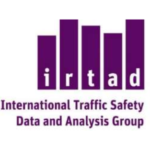
The 25th Meeting of the International Traffic Safety Data and Analysis Group (IRTAD) organised by the International Transport Forum (ITF) took place in Marrakesh, on 13 October 2017 ![]()
NTUA presentations concerned:

How can countries best harness transport and trade to drive progress in achieving the Sustainable Development Goals (SDGs)? How can enhancing countries’ statistics on trade, transport and road safety support this process? This was the focus of discussions at a Workshop organized by UNECE in collaboration with the Ministry of Transport and Maritime Affairs and Ministry of Economy of Montenegro, on 11-12 October 2017 in Podgorica, Montenegro. A key objective was strengthening countries’ knowledge of road safety, transport and trade-related SDGs, with UNECE highlighting the relevance of the SDG framework to the sustainability of national transport and trade policies. ![]()

The International Traffic Safety Data and Analysis Group (IRTAD) of the International Transport Forum (ITF/OECD) organised with great success the 6th IRTAD Conference, “Better road safety data for better safety outcomes” on 10-12 October 2017, in Marrakech, Morocco. The objectives of the conference were to discuss improvements in the quality of data systems and data analysis in IRTAD and other countries through discussion of methodological issues to improve road safety data collection and analysis at country and city level, through showcasing recent initiatives to improve the quality of safety data collection and analysis and through presentation of recent research and analysis undertaken by the IRTAD Group. ![]()
Marrakech Declaration on Better Safety Data for Better Road Safety Outcomes: ![]()
NTUA actively contributed with 6 presentations:
![]() Pan-African Road Safety Knowledge and Data Centre
Pan-African Road Safety Knowledge and Data Centre
![]() A Critical Review of International Road Safety Databases
A Critical Review of International Road Safety Databases
![]() An Overview of Road Safety Statistics in Africa
An Overview of Road Safety Statistics in Africa
![]() Current and future challenges of the European Road Safety Observatory
Current and future challenges of the European Road Safety Observatory
![]() SafetyCube – The European Road Safety Decision Support System
SafetyCube – The European Road Safety Decision Support System
![]()
![]() An assessment of the effectiveness of formal tools to address road network deficiencies
An assessment of the effectiveness of formal tools to address road network deficiencies
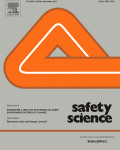
A special issue of Safety Science on Naturalistic Driving Research is now calling for papers with NTUA Professor George Yannis as Guest Editor. Manuscripts submitted to this Special Issue will enable information dissemination on the latest methodologies and findings from naturalistic driving research worldwide. Topic Areas may include, but are not limited to: Crash risk and crash causation, Distraction and inattention, Interaction with cyclists and pedestrians, Vehicle automation and connectivity, Eco-driving, Typical everyday driving behaviour, Novice drivers, Elderly Drivers, Naturalistic Cycling, Naturalistic Riding (Powered two-wheelers), Methodology and definitions. ![]()
Deadline for Submission of full paper online: December 31, 2017

The SafetyCube European Road Safety Decision Support System (DSS) was recently launched, developed within EU Horizons 2020 research project SafetyCube with the active contribution of NTUA. SafetyCube DSS is a long waited powerful tool offering for the first time worldwide, scientific evidence on the effects of a large number of road safety risks and related countermeasures on behaviour, infrastructure, vehicle and post-crash care, providing a wealth of scientific evidence to support road safety decision making. ![]()
![]()
NTUA presentation in the launch event concerned: ![]() SafetyCube – the European Road Safety Decision Support System
SafetyCube – the European Road Safety Decision Support System

The Global Alliance of NGOs for Road Safety, launched its new publication “Walking the Talk“, which describes the response of the Global Alliance of NGOs for Road Safety and its member NGOs to the call for action represented by the Sustainable Development Goals (SDGs), with focus on SDG 3.6 (“By 2020, halve the number of global deaths and injuries from road traffic accidents.”) and 11.2 (“By 2030, provide access to safe, affordable, accessible, and sustainable transport systems for all.”). ![]()
![]()

EuroNCAP launched its Road Map 2025, setting out for the first time the programme’s priorities for the mobility and technological revolution the auto industry is just beginning to experience. The objective is to offer clarity and confidence to motoring consumers, highlighting new automated driving technologies and raising awareness of their benefits whilst also helping to ensure their safety potential is fully realised. ![]()
![]()
![]()














































































































































































